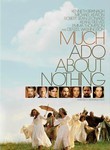Well, I was a little surprised, because I didn't think we did anything special. Surely, others have considered the use of mangas and graphic novels to introduce classic literature; within the library world, mangas have been a hot topic for some time now, and many libraries are quickly adding them to their collections. See the American Library Association's Great Graphic Novels for Teens. Titles include biographies, science, history, and fiction.
Mangas are basically a Japanese comic book. They have a very distinctive artistic style, and they are often made into anime (cartoons). Graphic novels are a Western version, and even old standards like the Hardy Boys mysteries are being adapted. Manga forms of Shakespeare are generally abridged versions of the original, and the art work is highly interpretive. For instance, in the Manga Shakespeare The Merchant of Venice, Shylock is given an evil, elfin appearance (to which I take exception--its very antisemitic). (Manga Shakespeare is a registered trademark for a manga publisher. I avoid their web site: It shuts my computer down every time! The publisher I prefer is Amulet Books.)
With their limited text and lively illustrations, mangas appeal to kids in general, reluctant readers, and those with reading problems or learning disabilities. And let's face it, Shakespeare is not easy reading, especially for a middle school student. So mangas are a wonderful way to introduce Shakespeare.
 We started with Much Ado about Nothing, one of my favorites. The DVD starring Kenneth Branagh and Emma Thompson brings the play to life. Beautifully filmed in the warm Italian sun, Branagh and Thompson make the play incredibly accessible and fun to watch. My daughter loved it and watched it twice! The Manga Shakespeare was not available at that time (it was published in August, 2009).
We started with Much Ado about Nothing, one of my favorites. The DVD starring Kenneth Branagh and Emma Thompson brings the play to life. Beautifully filmed in the warm Italian sun, Branagh and Thompson make the play incredibly accessible and fun to watch. My daughter loved it and watched it twice! The Manga Shakespeare was not available at that time (it was published in August, 2009).On my next post, I will talk about The Merchant of Venice, which I taught with history, rather than with our literature studies.
No comments:
Post a Comment